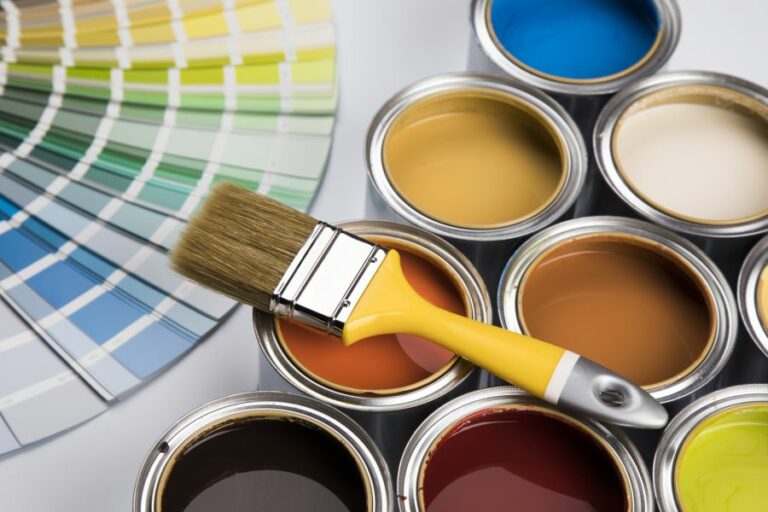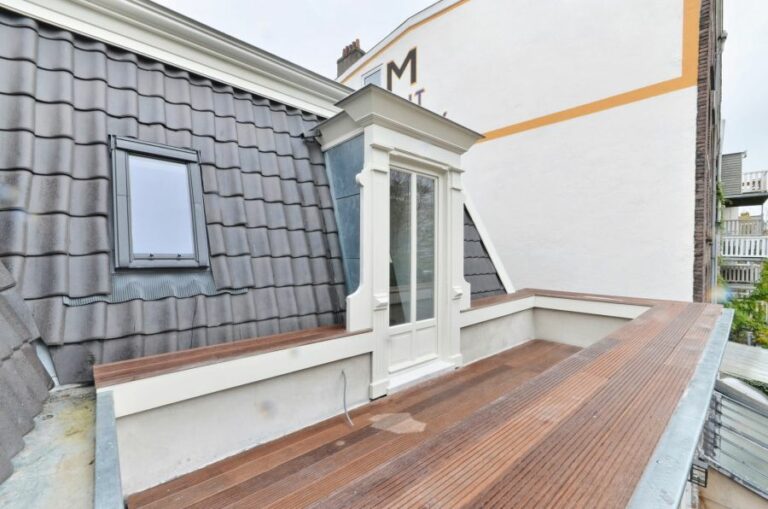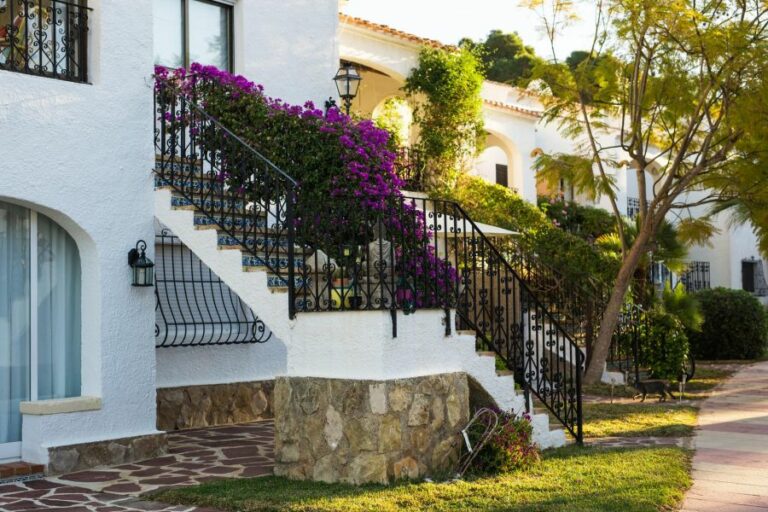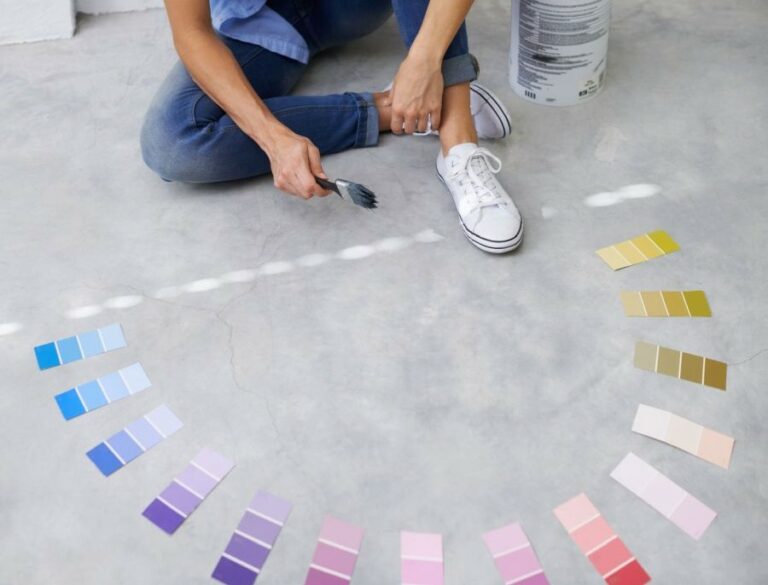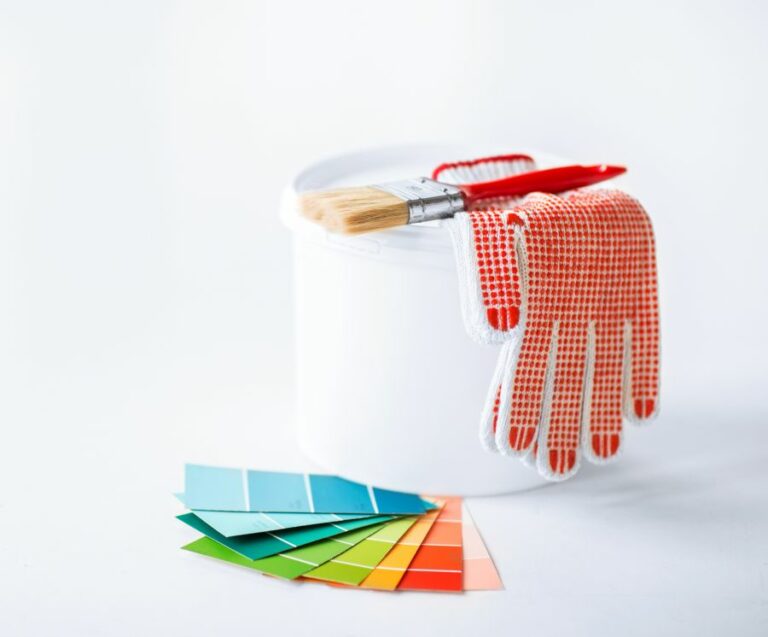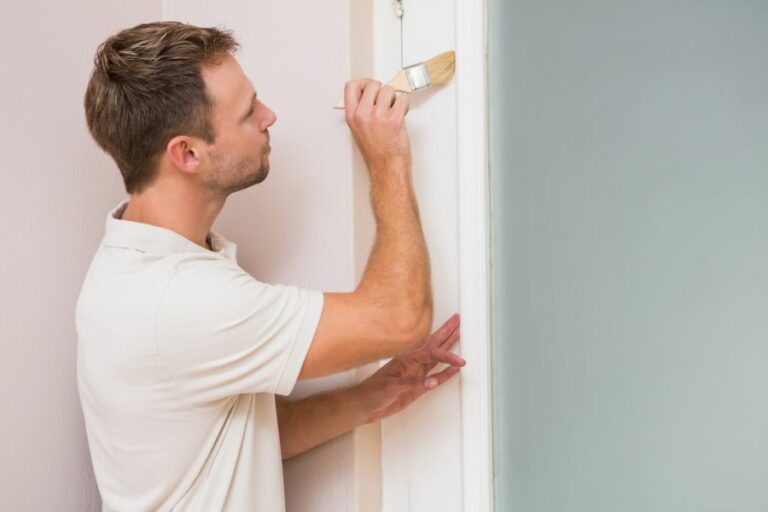Outdoor Textured Paint, 25 Things You Should Know
Discover how to elevate your home’s aesthetic appeal and durability by incorporating outdoor textured paint. Let’s delve into the distinctive features and incredible advantages of textured finishes for your home’s exterior. Learn the best tricks and tips for achieving a stunning, resilient surface that withstands the test of time, weather, and daily wear and tear.
Outdoor textured paint:
Outdoor textured paint is a durable, weather-resistant specialty paint designed for exterior surfaces of buildings and structures. It offers aesthetic appeal, surface protection, and easy application. When choosing the right paint, factors include paint type, texture, finish, color, and coverage. To ensure a professional finish, follow proper surface preparation, use appropriate tools, and apply the paint in ideal weather conditions. Regularly clean and maintain the painted surface, repair any damage promptly, and conduct periodic touch-ups to preserve the paint’s appearance and protective properties.

Explore the world of outdoor textured paint in this comprehensive guide. Discover application techniques, ideal surfaces, and popular brands. Master transforming your exterior space with a durable and eye-catching finish. Let’s dive in and get creative!
Contents
- 1 Exterior Textured Surface Paint
- 2 Is it Possible to Utilize Textured Paint for Exterior Applications?
- 3 Textured Exterior Paint: An Essential Guide
- 4 What is the method for adding texture to exterior paint?
- 5 Does Textured Paint Possess Waterproof Qualities?
Exterior Textured Surface Paint
• What is Outdoor Textured Paint?
Outdoor textured paint, also known as exterior textured paint, is a specialty paint designed to be used on exterior surfaces of buildings and structures. It contains unique additives and characteristics that can withstand harsh weather conditions, resists fading and peeling, and maintain its fresh appearance for an extended period.
• Why Choose Outdoor Textured Paint?
– Durability and Weather Resistance
Outdoor textured paint is specifically formulated with enhanced durability and weather resistance to protect surfaces against harsh weather conditions. This type of paint can endure sun exposure, heavy rain, snow, and temperature fluctuations without losing its color or protective qualities.
– Aesthetic Appeal
Textured paint adds an upscale, modern look to the exterior of a building or structure. It is available in various textures, finishes, and colors that can help create a unique and stylish appearance that enhances the overall curb appeal.
– Surface Protection
The textured finish of this paint creates a protective barrier that helps prevent moisture, dirt, and mildew from penetrating the surface. The paint’s adhesion properties also help reduce the chances of peeling and cracking, ensuring your painted surface remains intact and well-maintained.
– Easy Application
Textured paint is easy to apply, making it a suitable choice for both professional painters and DIY enthusiasts. With the correct tools and techniques, you can achieve a uniform and textured finish on a variety of surfaces, such as wood, stucco, and brick.
• Choosing the Right Outdoor Textured Paint
When selecting an outdoor textured paint, consider the following factors:
– Paint Type
There are various types of textured paint available, such as acrylic-based and water-based options. Acrylic-based paints are generally more durable and weather-resistant than water-based paints, making them a better choice for outdoor use.
– Texture and Finish
Textured paint comes in different finishes, such as matte, satin, and gloss, each offering unique visual appeal and benefits. Matte and satin finishes can help conceal minor surface imperfections, while a gloss finish may enhance the texture of the paint.
– Color
Choose a color that complements the exterior of your building or structure, and consider the impact of sunlight on the paint’s color over time. Lighter colors tend to reflect sunlight and may reduce heat absorption, while darker colors may fade faster in areas with extended sun exposure.
– Coverage
Select a paint with good coverage properties to ensure you won’t need multiple coats for the desired finish. High-quality textured paints typically offer better coverage than lower-quality options.
• Application Tips for a Perfect Finish
To ensure a professional-looking finish when applying textured paint outdoors, follow these tips:
– Surface Preparation
Thoroughly clean the surface you intend to paint, removing dirt, grime, and peeling paint. Repair any imperfections, such as cracks and holes, before painting. Use a high-quality primer specifically formulated for outdoor use to ensure a consistent and long-lasting finish.
– Tools and Equipment
Use the appropriate tools for applying textured paint, including brushes, rollers, or sprayers designed for textured finishes. A paint roller with a long nap (3/4 inch to 1 inch) works well for most surfaces, whereas a paint sprayer should be used when aiming for a smoother finish or working on a large surface area.
– Proper Application Techniques
Apply the paint evenly, working in manageable sections to prevent uneven texture distribution. Use a brush or roller to create the desired texture effect, experimenting with different application angles and pressures to achieve the desired look.
– Ideal Weather Conditions
Avoid applying textured paint during extreme weather conditions, such as high winds, rain, or extreme temperatures. The best conditions for applying outdoor textured paint are mild temperatures, low humidity, and overcast skies.
• Maintenance and Care
To keep your outdoor textured paint looking fresh and well-maintained, follow these steps:
– Cleaning
Gently clean the painted surface regularly using a soft brush or cloth and a mild detergent. Avoid using harsh chemicals or power washing, as this can damage the paint’s finish and texture.
– Prompt Repairs
Address any damage or imperfections, such as cracks or peeling paint, as soon as they arise. Prep the affected area and apply a fresh coat of paint to maintain a consistent finish and protect the surface.
– Periodic Touch-Ups
Over time, the color and protective properties of the paint may fade or wear away. Conduct periodic touch-ups or apply a fresh coat of paint as needed to maintain the desired appearance and level of protection.
In conclusion, outdoor textured paint is an excellent choice for enhancing the aesthetics and protecting the surfaces of your home or building. With proper selection, application, and care, you can enjoy the benefits of this durable and stylish paint option for years to come.
Is it Possible to Utilize Textured Paint for Exterior Applications?
Textured paint is a versatile and practical option for homeowners looking to add depth, dimension, and durability to their home’s exterior. This unique paint type creates texture and depth in a variety of outdoor surfaces, from concrete to stucco, enhancing the overall aesthetic appeal.
• Benefits of Using Textured Paint Outside
– Enhanced Aesthetic Appeal
Textured paint can elevate your home’s exteriors by providing distinctive visual appeal. By creating interesting surfaces and patterns, textured paint can transform plain, flat walls into interesting and appealing features that complement and enhance your home’s architectural design.
– Increased Durability
Textured paint not only enhances the appearance of your home’s exterior; it also offers long-lasting protection against wear and tear.
Unlike traditional paint, textured paint is thicker and more durable, which can extend the lifespan of your exterior surfaces, thus requiring less frequent maintenance and repainting.
– Better Hiding of Imperfections
One of the key benefits of textured paint is its ability to mask surface imperfections. Its thick consistency and varied textures help conceal blemishes, cracks, and other surface irregularities, making it an ideal choice for older homes or those with rough, uneven surfaces.
– Slip Resistance
Textured paint can also provide slip resistance when used on outdoor surfaces like steps, patios, and pool decks. By creating a rougher surface, textured paint reduces the risk of slipping or skidding, making your outdoor spaces safer and more enjoyable.
• Types of Textured Paint for Outdoor Use
There are several types of textured paint that can be used for exterior surfaces. When selecting the right textured paint, it’s essential to consider the surface type, desired texture, and overall look you wish to achieve.
– Acrylic Textured Paint
Acrylic textured paint is water-based and regarded for its versatility, ease of use, and environmental friendliness. This type of paint is resistant to UV rays, making it an excellent choice for outdoor surfaces that are frequently exposed to sunlight.
Acrylic textured paint is available in various textures and finishes, giving you plenty of options to achieve your desired look.
– Mica-Based Textured Paint
Mica-based textured paint consists of tiny, reflective flecks that add a shimmering, radiant effect. This paint is particularly suited for enhancing the aesthetics of your home’s exteriors, as it can catch and reflect sunlight in a visually captivating manner.
– Epoxy-Textured Paint
Epoxy-textured paint is known for its incredible durability, making it an ideal option for outdoor surfaces that require a high level of protection. Typically used on surfaces such as concrete floors, pool decks, and patios, epoxy-textured paint provides excellent resistance to abrasion, chemicals, and moisture.
• Preparing Your Exterior Surface for Textured Paint
Before applying textured paint, it’s essential to prepare the surface properly. Adequate preparation will ensure that your textured paint adheres correctly and lasts longer.
– Cleaning the Surface
Remove any dirt, debris, or mildew from your home’s exterior using a power washer or a mixture of mild detergent and water. Ensure that the surface is thoroughly clean and allow it to dry completely before applying any paint.
– Repairing Cracks or Damages
Inspect the surface for any damages or cracks and repair them as needed. Use a high-quality, exterior-grade filler or caulking to address any existing imperfections.
– Priming the Surface
A high-quality primer can enhance the adhesion and longevity of your textured paint. Apply an appropriate primer for your chosen paint type and the specific exterior surface.
• Applying Textured Paint to Your Homes Exterior
When applying textured paint, it’s crucial to follow the manufacturer’s instructions to achieve the best results. Additionally, consider these helpful tips for a smooth and successful application:
- Stir the paint thoroughly before use and during application to maintain a consistent texture.
- Use a high-quality paint roller or brush specifically designed for textured paint to ensure even coverage.
- Apply the paint using gentle, even strokes while maintaining a wet edge to prevent streaks or lines.
- Work in small sections, and be mindful of overlaps and excess paint buildup.
• Caring for Your Textured Paint Surface
Proper maintenance is essential to extend the lifespan of your textured paint surface. Regularly clean your home’s exterior and periodically inspect for any signs of wear or damage.
Address any issues as soon as possible to prevent further deterioration and maintain your home’s beautiful and long-lasting textured paint finish.
In conclusion, textured paint is an excellent choice for your home’s exterior, providing numerous benefits, including enhanced aesthetic appeal, durability, and concealment of imperfections.
By choosing the right type of textured paint, properly preparing the surface, and carefully applying the paint, you can create a beautiful and long-lasting finish that will greatly enhance your home’s curb appeal.
Textured Paint | Can it be used outside? |
|---|---|
Water-Based Textured Paint | Yes |
Oil-Based Textured Paint | Yes |
Acrylic Textured Paint | Yes |
Sand-Based Textured Paint | Yes |
Textured Exterior Paint: An Essential Guide
Textured exterior paint offers a unique and practical solution for property owners looking to enhance their homes or businesses’ visual appeal and durability.
• What is Textured Exterior Paint?
Textured exterior paint is a type of paint specifically formulated for use on exterior surfaces, such as walls, stucco, and masonry. This paint contains added aggregates, like sand or other materials, which create a textured, gritty appearance when dry.
The texture varies depending on the type and size of aggregate added, resulting in a range of styles to choose from, such as fine, medium, or coarse textures.
• Benefits of Textured Exterior Paint
There are several benefits to using textured exterior paint for your property.
– Enhanced Visual Appeal
Textured paint can significantly improve the aesthetics of your home or commercial building. The surface texture adds depth, character, and visual interest, which can make your property stand out and increase its overall curb appeal.
– Durability and Longevity
Textured exterior paint is known for its excellent durability and resistance to various elements. The textured surface provides an additional protective layer that can withstand harsh weather conditions, UV rays, and daily wear and tear. This increased durability means your painted surfaces will look better and last longer compared to traditional exterior paints.
– Hiding Imperfections
The uneven and rough texture of this type of paint helps mask minor imperfections and blemishes in the underlying surface. Small cracks, uneven surfaces, and other flaws are less noticeable when using textured exterior paint, reducing the need for extensive surface preparation before painting.
– Slip Resistance
The textured surface of this paint can provide added grip, making it suitable for surfaces that require slip resistance, like exterior walkways and stairs.
• Choosing the Right Textured Exterior Paint
When selecting textured exterior paint, consider the following factors:
– Type of Surface
Different surfaces, such as wood, metal, masonry, or stucco, may require specific types of textured paint. Ensure the paint you choose is formulated for use on your intended surface.
– Desired Texture
Consider the level of texture you want to achieve fine, medium, or coarse, and choose a paint with the appropriate aggregate size.
– Color and Finish
Textured paints are available in various colors and finishes, such as matte, semi-gloss, and gloss. Consider the overall look you want to achieve when selecting the color and finish.
– Quality
Investing in high-quality textured exterior paint is crucial for a long-lasting, durable finish. Look for reputable brands and carefully read product reviews to ensure you’re choosing a reliable product.
• How to Apply Textured Exterior Paint
Proper surface preparation and application techniques are essential for achieving a durable and visually appealing textured finish. Follow these steps:
– Surface Preparation
- Inspect the surface for damage or imperfections, such as cracks and peeling paint—repair, and sand as necessary.
- Clean the surface to remove dirt, mildew, and debris. A pressure washer can be particularly useful for this step.
- Allow the surface to dry completely before painting.
- Apply primer if necessary, particularly if you’re painting over a porous or dark surface.
– Application Techniques
- Stir the textured paint thoroughly to ensure the aggregates are evenly distributed.
- Use a brush, roller, or spray gun designed for textured paint application. Brushes and rollers with thick, sturdy bristles or naps are typically recommended.
- Apply the paint in a thick and even layer, ensuring you maintain a consistent texture across the entire surface.
- Allow the first coat to dry according to the manufacturer’s instructions, then apply a second coat if necessary.
- Be prepared to clean your brushes, rollers, or spray equipment promptly after use, as the added aggregates can make the paint more challenging to clean once dry.
In conclusion, textured exterior paint provides a durable and visually appealing solution for enhancing your property’s exterior. By understanding the benefits, selection process, and application techniques, you can make informed decisions and achieve the desired finish.
Remember to invest in high-quality paint and practice proper surface preparation and application methods to ensure a long-lasting, beautiful result.
What is the method for adding texture to exterior paint?
Exterior paint texture plays a significant role in increasing the visual appeal and protective qualities of your home’s exterior.
Learning how to texture outdoor paint can be a valuable skill for any homeowner, as it not only enhances the appearance of your house but also provides an additional layer of protection against environmental elements.
• Choosing the Right Paint for Textured Outdoor Surfaces
Selecting the proper paint with adequate durability and weatherproofing qualities is crucial for the success of your outdoor texturing project. Acrylic-latex paint is a popular choice due to its excellent adhesion and flexibility, which helps prevent cracking and peeling.
Additionally, it offers superior resistance to mildew, UV rays, and moisture compared to oil-based paints.
For optimal results, I recommend investing in a high-quality exterior paint that is specifically designed for textured surfaces. This paint type offers added benefits, such as superior coverage and a thicker consistency, which aids in creating consistent textures across the surface.
• Preparing the Surface for Texturing
Before applying any paint, it is essential to clean and prepare the outdoor surface properly. This step ensures proper adhesion of the paint and prolongs the life of your textured finish.
- Clean the surface: Remove dirt, mold, and mildew from the surface using a pressure washer or a mixture of water and detergent. For stubborn stains, a scrub brush can be used. Allow the surface to dry thoroughly before proceeding.
- Remove loose or peeling paint: Use a scraper or wire brush to remove any loose or peeling paint. Sand the edges of the remaining paint to create a smooth transition to the exposed surface.
- Repair damaged areas: Fill cracks, holes, and damaged areas with an appropriate exterior filler or caulk. Sand the repaired areas smoothly and wipe them clean of any dust.
- Apply primer: If the surface is highly porous, stained, or has been repaired extensively, apply a high-quality exterior primer to help ensure proper adhesion and even coverage of the textured paint.
• Popular Outdoor Paint Texturing Techniques
– Rolled-on Texture
One effective technique for achieving a textured finish on your exterior walls is using a textured paint roller. This method is relatively simple to master and is highly versatile, allowing for various texture styles and patterns depending on the type of roller cover used.
- Choose a textured roller cover: Textured roller covers are available in various styles and patterns, such as stipple or “knockdown” texture. These specialized covers can typically be found at your local paint or hardware store.
- Apply the paint: Dip your roller into the paint and remove excess by rolling it on a grid or paint tray. Begin by applying the paint on a small section of the wall using a “W” or “M” pattern, working in even strokes to ensure consistent texture. Continue this process, only working on small sections at a time to maintain texture consistency.
- Smooth out the texture: If desired, use a drywall knife or trowel to smooth out any rough areas and create a more uniform texture.
– Stipple Texture
Stipple texture involves dabbing paint onto the surface with a specialized brush to create a consistent, textured pattern. This method is suitable for smaller outdoor areas, such as trim or accent features, as it can be more time-consuming than using a textured roller.
- Choose a stipple brush: Stipple brushes are specifically designed for creating textured patterns and can be found at local paint or hardware stores. One example is a round, short-bristled brush.
- Dip the brush in paint: Load your brush with a moderate amount of paint and dab the excess on a piece of cardboard or paint tray.
- Apply the paint in a dabbing motion: Press the brush against the surface, using a stippling (dabbing) motion to create the desired texture. Work only in small sections at a time to maintain consistency.
- Smooth out the texture: If necessary, use a drywall knife or trowel to gently blend and smooth the texture for a more uniform appearance.
– Textured Spray Application
For large outdoor areas or hard-to-reach spots, a textured paint sprayer can provide a quick, efficient solution. Texture sprayers utilize compressed air to apply a consistent pattern of paint droplets on the surface, creating a unique, textured finish.
- Choose a texture sprayer: Several types of texture sprayers are available, including hopper-style and airless sprayers. Select a sprayer that suits your specific texturing needs and preferences.
- Prepare the paint: Some texture sprayers require you to thin the paint with water or another medium. Follow the manufacturer’s guidelines for the proper mix ratio and pour the paint into the sprayer’s reservoir.
- Spray the paint: Holding the sprayer 12 to 18 inches away from the surface, apply the paint using even strokes and a consistent speed. Ensure you overlap each pass slightly for uniform coverage and texture.
- Adjust the texture as needed: Some texture sprayers offer adjustable settings that allow you to modify the spray pattern or droplet size, giving you more control over the final texture appearance.
• Conclusion
With some practice and attention to detail, you can achieve a professional-quality textured finish on your home’s exterior.
Whether you choose to use a roller, brush, or sprayer, the most crucial factors for success include proper surface preparation, selecting the right paint for your project, and working in small sections to maintain consistent texture quality.
By incorporating these techniques and tips, you can create an attractive, durable textured finish that enhances your home’s appearance and withstands the elements.
Step | Description |
|---|---|
1. Prepare the surface | Clean the surface thoroughly to remove dirt, dust, and mildew. Repair and fill any cracks or holes with an exterior filler, and sand the surface lightly. |
2. Choose the right paint texture | Select a textured paint or additive that is suitable for your desired effect, taking into consideration factors such as climate and surface type. |
3. Mix the paint and texture additive | In a separate container, combine the paint and texture additive, following the manufacturer’s instructions for the correct ratio. Mix thoroughly to ensure consistency. |
4. Apply the textured paint | Using a paint roller, brush, or spray gun, apply the textured paint evenly to the surface. Use a specific technique, such as stippling or rolling, for the desired result. Apply multiple coats if necessary, allowing each coat to dry before applying the next one. |
5. Seal the surface | After the textured paint has dried, apply a clear sealer to protect the surface from weather and wear. This step is important to maintain the durability and longevity of the textured paint job. |
Does Textured Paint Possess Waterproof Qualities?
When considering a new paint job for your home’s exterior or interior, you might have come across textured paint as an option. Textured paint adds a unique finish to walls and ceilings, offering a visual and tactile appeal.
But, as a homeowner, you might be wondering if textured paint is waterproof, especially for areas with high moisture exposure, such as bathrooms and kitchens.
• Understanding Textured Paint
Textured paint is a type of paint that contains additives creating a rough, uneven surface when applied. These additives commonly include sand, silica, or other granules.
The main purpose of textured paint is to add dimension and character to walls, cover imperfections, and provide a more decorative finish than standard flat paint.
There are different types of textured paint that vary in consistency and style:
- Premixed textured paint: This type of paint comes pre-mixed and is available with various textures, such as sand, popcorn, or stucco finish. Once applied, it gives walls and ceilings the chosen texture, which might range from subtle to dramatic.
- Self-mixing textured paint: In this case, homeowners purchase separate texture additives and mix them with regular paint according to the manufacturer’s instructions. This method allows choosing the desired texture intensity based on personal preference.
• Waterproof Qualities of Textured Paint
The plain truth is that textured paint, in itself, is not waterproof. However, several factors can contribute to its water resistance, such as:
- Type of paint base: Textured paint can be made with either water-based (latex) or oil-based (alkyd) paint. Generally, oil-based paints provide better water resistance, but they also have a stronger odor and longer drying time and are not as environmentally friendly as water-based paints.
- Additional waterproofing additives: There are specialty waterproofing additives specifically designed for mixing with regular paint, enhancing its water resistance. These can also be mixed with textured paint to increase their waterproofing capabilities. However, it is essential to follow the manufacturer’s instructions when mixing any additives to ensure optimal results.
- Proper surface preparation: Regardless of the type of paint used, proper surface preparation is crucial for waterproofing. This includes cleaning the surface, removing any loose paint or debris, and applying a primer or sealer if needed. A well-prepared surface will ensure better adhesion, thus increasing the paint’s water resistance.
• Benefits of Textured Paint
There are several reasons why textured paint might be a suitable choice for your project, including:
- Hiding imperfections: Textured paint does an excellent job of concealing surface defects such as cracks, dents, and unevenness that a regular paint job might not hide well.
- Adding visual interest: By going beyond a traditional flat finish, textured paint allows you to achieve a wide range of decorative effects on your walls and ceilings, which can boost visual interest and add a unique element to your home decor.
- Durability: Textured paint creates a thicker and more resilient finish compared to standard paints, making them more durable and resistant to wear and tear.
• Applications of Textured Paint
Textured paint can be used in various settings throughout your home, both interior and exterior. Some popular applications include:
- Living rooms and bedrooms: Using textured paint in these areas can add warmth and depth, enhancing the overall ambiance and making spaces feel more inviting.
- Bathrooms and kitchens: As mentioned earlier, textured paint is not waterproof by default, but when combined with waterproofing additives and proper surface preparation, it can be a suitable option for these moisture-prone areas.
- Exterior walls: Textured paint can create a protective layer on your home’s exterior surfaces that not only adds visual appeal but also offers improved resistance against harsh weather conditions and potential damage from UV rays.
• Recommendations and Tips
When considering using textured paint for your project, keep in mind the following recommendations and tips:
- Always follow the manufacturer’s instructions when mixing texture additives or waterproofing agents with paint.
- Before committing to a particular texture, please test it out on a small area to ensure it provides the desired effect.
- Proper surface preparation is crucial for achieving the best results with textured paint. Thoroughly clean and repair the surface before applying primer and paint.
- For optimal water resistance, consider combining textured paint with waterproofing additives or using water-resistant paint as a base.
- Always use high-quality paint and materials, as this will significantly impact the paint’s durability and water resistance.
In conclusion, while textured paint is not innately waterproof, it can achieve water resistance with the appropriate paint base, waterproofing additives, and proper surface preparation.
Textured paint offers a versatile and visually appealing finish that can enhance your home’s appearance while also providing benefits such as improved durability and hiding imperfections.
So, if you are considering textured paint for your next home improvement project, it could be the right choice, but remember to weigh factors such as moisture exposure and desired level of waterproofing.

